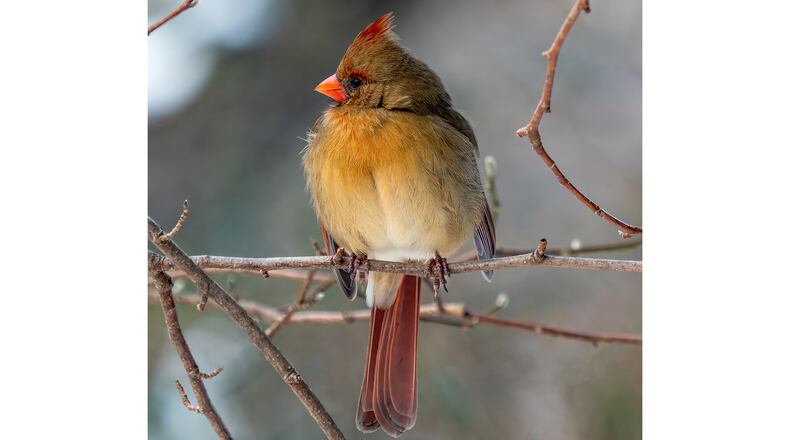After a night of subfreezing temperatures — like those we’ve had in Georgia this week — it’s heartening to see the songbirds, woodpeckers and other feathered creatures still flitting about my yard come sunrise.
It’s proof that they survived a bone-numbing cold night. But how do they do it? How do little birds such as chickadees, weighing only as much as two nickels, make it through a night with temperatures dipping to 15 degrees Fahrenheit or lower?
Though some birds undoubtedly succumb to frigid cold, native birds have developed amazing ways over eons of time to survive subfreezing conditions.
To begin with, many birds grow thicker coats of insulating feathers in winter. In addition, birds can increase insulation by 50% simply by fluffing up their feathers to trap air near their warm bodies — the reason why puffed-up birds are common winter sights. In extreme cold, birds also may tuck in their necks, legs and wings to avoid losing heat.
Many birds — blue jays, chickadees, juncos, mourning doves, cardinals and others — seek protection from cold wind, rain and snow in thick shrubs, hedges and evergreen trees, such as pines, hemlocks and red cedars. Chickadees may perch close together near an evergreen trunk to block off wind. Large flocks of crows may roost close together in evergreens and pool their body heat.
Cavity-nesting birds — bluebirds, chickadees, titmice, nuthatches, screech owls, downy and hairy woodpeckers — also are likely to use natural tree cavities or bluebird boxes for roosting and protection against the frigid air.
Physiological adaptations also help birds ward off cold. They include shivering (like humans do) and lowering body temperatures by 10-15 degrees to save energy in a process known as “regulated hypothermia.”
You can help the birds survive cold spells by providing high-energy foods like suet, peanuts and black oil sunflower seeds. Water is essential year-round, so adding a heated birdbath can help keep birds hydrated.
IN THE SKY: From David Dundee, Tellus Science Center astronomer: The moon will be full on Thursday. Mercury is low in the east just before sunrise. Venus rises out of the east a few hours before sunrise. Mars is very low in the east just before dawn. Jupiter is high in the south at sunset. Saturn is in the west just after dark.
Charles Seabrook can be reached at charles.seabrook@yahoo.com.
About the Author
Keep Reading
The Latest
Featured

